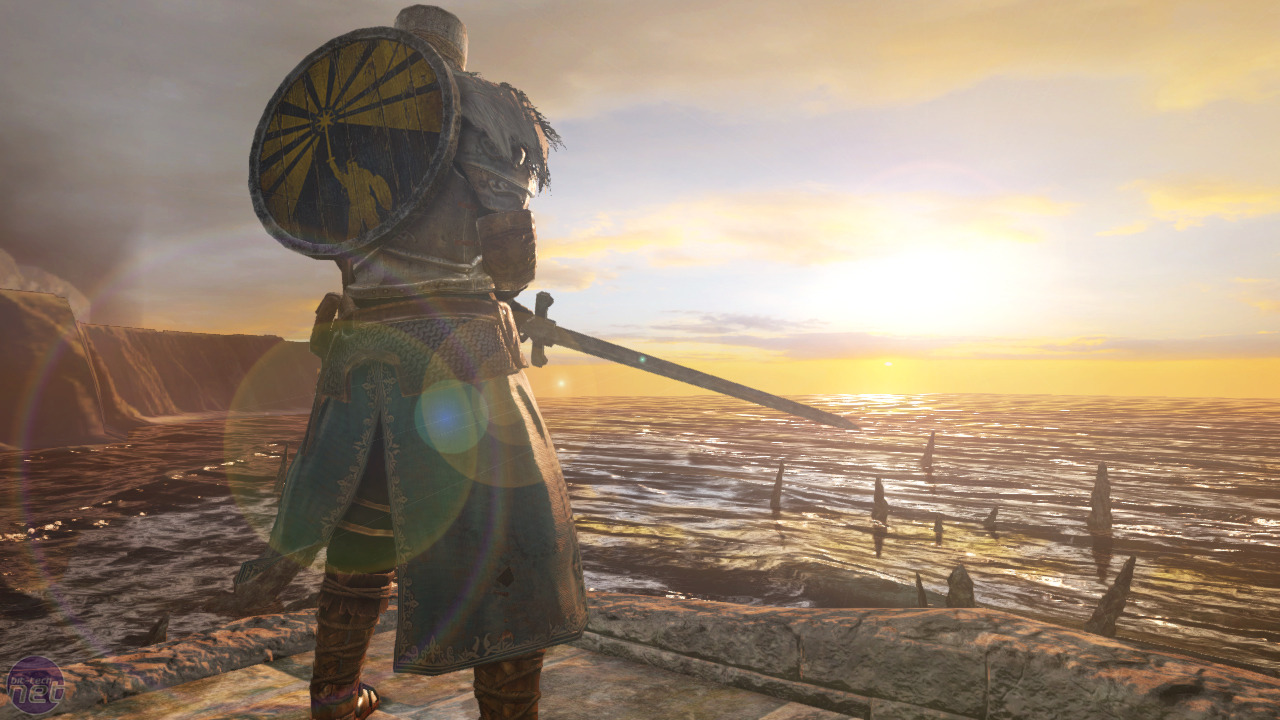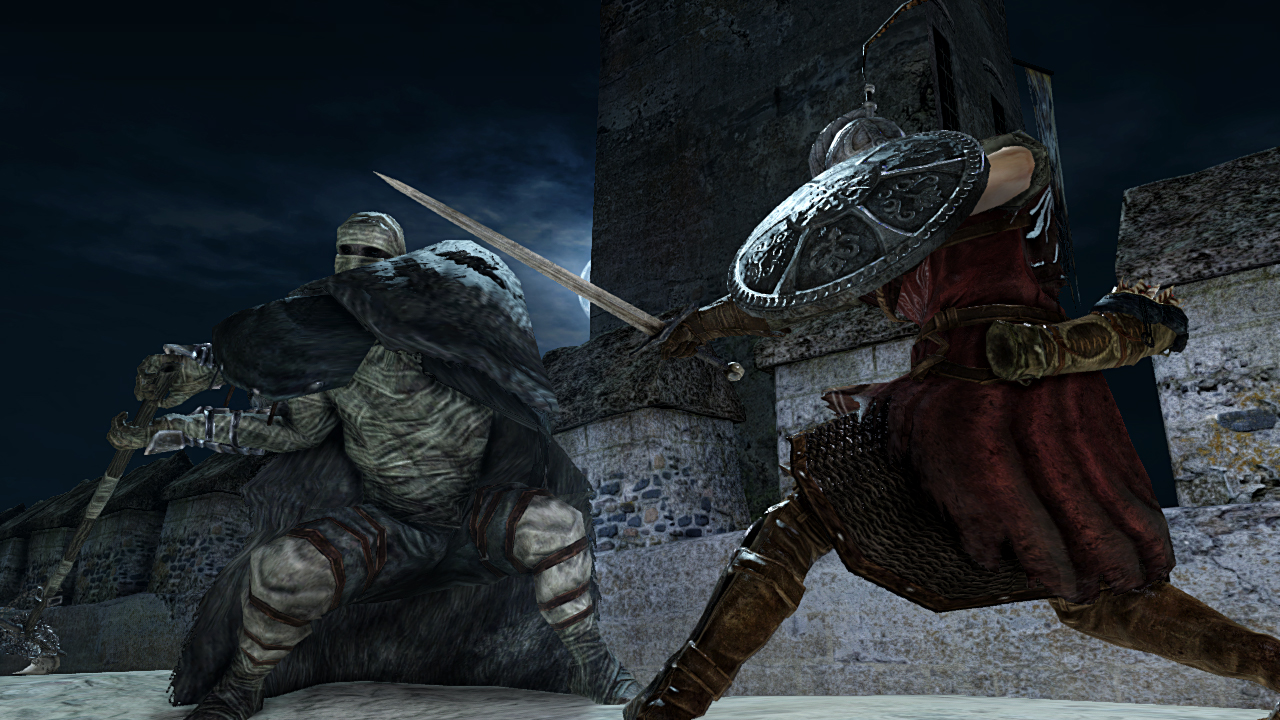 Is Dark Souls II better than the first game?
Is Dark Souls II better than the first game?
Is Dark Souls II harder? Prettier? More accessible?
I imagine these are the most common questions surrounding Dark Souls II, and they all directly address its status as a sequel. Despite the success of Demon’s Souls, Dark Souls truly represents the transition from niche to phenomenon. It also casts a large shadow, one that looms over Dark Souls II in casual discussion. But I try to remove myself from that mindset while analyzing Dark Souls II because it detracts from the experience. Comparisons are worthy of discussion, but I hate to use those comparisons to disparage the overall product. In spite of the “Dark Souls” moniker, Dark Souls II feels like its own distinct adventure, one that both thrives and stumbles in key areas. At the end of the day, Souls games are one-of-a-kind experiences that overcome their flaws, and Dark Souls II is no different.
Demon’s Souls, Dark Souls, and Dark Souls II all fall under the umbrella of the Souls series, and yet each game presents a different experience through its setting and world structure. Drangleic in Dark Souls II uses the “bigger is better” philosophy—the size and scope of the world certainly trump the first two games in the series. At one point I honestly considered keeping a notepad handy to keep track of all possible routes, locked doors, and areas I had yet to discover. It both overwhelms and excites the player; I fear the possibility of stumbling upon enemies that would destroy me, but I also find great comfort in the prospect of discovery. There’s nothing quite like taking a leap of faith and then finding a rare ember that helps upgrade weapons significantly (true story).

The sprawling nature of Dragleic would make it much harder to get around without the immediate benefit of fast travel. Luckily players don’t have to worry about acquiring a Lordvessel—they can jump from one bonfire to the next right at the beginning of the game, which allows for a more thorough exploration of the world. It also means players will see a lot of Majula, the first town in the game. Think of it as Dark Souls II’s interpretation of Demon’s Souls’ Nexus, complete with an NPC who helps the player level up. I can’t count how many times I had to go back to Majula, but thankfully it’s a visually appealing location. Remember how awe-inspiring the golden sheen and Gothic architecture of Anor Londo was in Dark Souls? Majula inspires the same sense of wonder with its gorgeous sunsets and endless view of the ocean. What Dark Souls II lacks in technical prowess it makes up for in art design. Developer From Software makes a greater effort to champion environmental variety, which paints Dragleic as a far more interesting world. Though I prefer the interconnectedness of Lordran in Dark Souls, the bold design of Dragleic helps the sequel establish its own identity.
Outside of the game world, From Software has implemented a number of important mechanical changes in Dark Souls II which seem to emphasize a greater sense of challenge. For example, I love Estus flasks with a passion. I’ll drink two in one gulp to help during a boss fight in Dark Souls. Well, the player only starts with one in Dark Souls II, and the only way to increase that number is to find Estus shards, which are… let’s just say they’re not plentiful. Instead, players rely on lifegems, which restore less health and take longer to actually heal. Ultimately, this shrinks the window of opportunity when it comes to healing in battle, and emphasizes near-perfection in key boss fights. I have a love/hate relationship with the change. On one hand, it emphasizes competitive skill in battle more so than attrition, but it also creates needlessly frustrating moments. Healing at the right time is its own kind of skill, so why can’t that be valued, too?
Animation speed also plays a huge role in battle, which correlates with the new Adaptability attribute. I chose the bandit class because I wanted to use a bow, so I started with my Adaptability at two or three. To my utter shock and amazement, I was so slow. Drinking Estus flasks, raising my shield, rolling out of the way… all of the movements took much longer than I was expecting. It turns out that Adaptability helps raise the Agility stat, which affects roll and movement speeds. Until I realized this, I had a rough time with the game. Though it did force me to be careful and methodical—always a good thing in Souls games—it also felt sluggish. I don’t mind the initial difficulty spike, but it appears as if From Software constructs that difficulty by reducing the player’s abilities, instead of strengthening the enemies.

Another example of this comes in the form of the new hollow/human system, which now uses human effigies. Every time the player dies, he loses a piece of his overall health. The effect stacks until the player reaches half health – at that point, the only way to get health back is to use a human effigy and become human. Just like Estus shards, human effigies are somewhat rare for a large portion of the game. I did eventually come across an amazing ring that helps offset the health loss, but again, it highlights how difficulty comes from player debilitation. I would have preferred to see bigger challenges when it comes to normal enemies and bosses, the latter of which stand out as far less difficult in Dark Souls II.
That being said, the Souls games somehow manage to take those key flaws and sweep them under the rug. Though I took issue with some of the new mechanics, I still experienced the same thrill of victory that makes the series a personal favorite. There were plenty of moments in which I struggled, wasted numerous lifegems, and hit my head against the proverbial wall. But facing those obstacles and conquering them still excites me like no other game. In fact, because the game restricts player movement and health, it makes victory that much sweeter. “Take that, From Software!”
And in spite of the new learning curve, Dark Souls II does stand out as the most accessible game in the series. It still has its fair share of secrets, but the game does a better job of conveying key mechanics and systems. I attribute a large portion of this to the refined covenant system. Basically, players don’t have to go out of their way to find most of Drangleic’s covenants. I believe I ended up joining seven or eight different covenants by the time I finished Dark Souls II, and it helped integrate the multiplayer portion of the game in a way that Demon’s Souls and Dark Souls failed to accomplish. I took part in jolly cooperation, faced off in some epic PvP fights, and even helped protect players from invaders. There were a few nights in which I solely focused on the multiplayer portion of the game, and it’s because I was able to discover and join those covenants so easily.
The increased accessibility coupled with the game’s expansive world and sense of accomplishment make Dark Souls II a game that lives up to the hype. It doesn’t top my love of the original Dark Souls, but it does manage to craft its own identity in a wildly popular series. Not many sequels manage to pull that off, and Dark Souls II should be applauded for its success. Now excuse me while I begin New Game Plus.

















